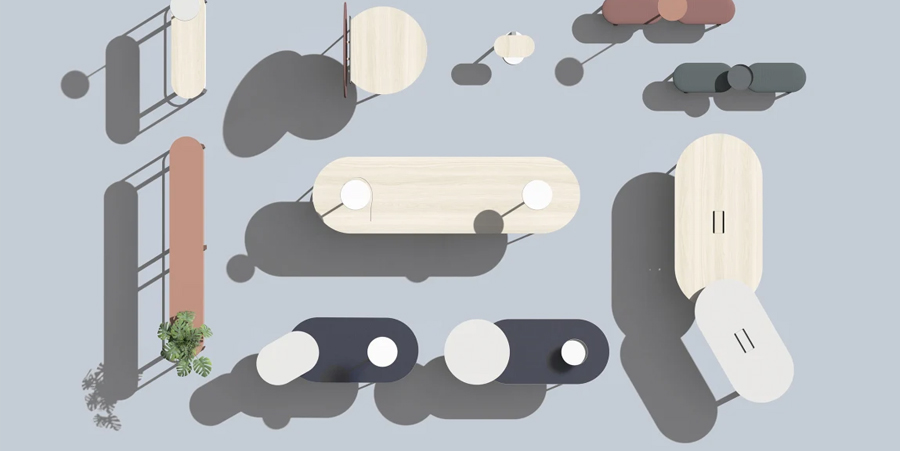If the cubicle symbolized the mid-century office, and the open floor plan defined the early 2000s, what will the hybrid work era look like?
For the husband-and-wife duo behind industrial design studio Mike & Maaike, the answer involves round edges—and flexible everything. Launching today at Chicago’s famed NeoCon trade show, the furniture collection has been dubbed Haven and offers a glimpse into what our offices may look like in the near future. Hint: informal collaboration is high on the list.
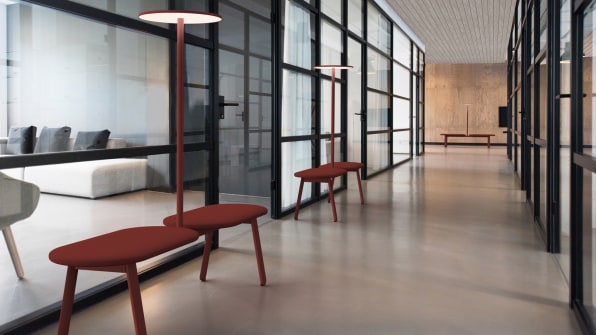
“It’s not an individual workplace anymore,” says Maaike Evers, who designed Haven with her husband Mike Simonian, in collaboration with furniture brand Watson. “Work is evolving into a much more collaborative offering, so how do people come to that and connect into that?”
It starts with a round table, or at the very least, rounded edges. The Haven collection includes meeting tables, benches, coffee tables, and a plethora of flexible setups designed for teamwork—with every single piece of furniture rounded. “It’s about an inclusive setting,” says Simonian. A square table has four corners that define the maximum number of people who can sit around it. A round table is “like an open door to come in and join the conversation,” he says.
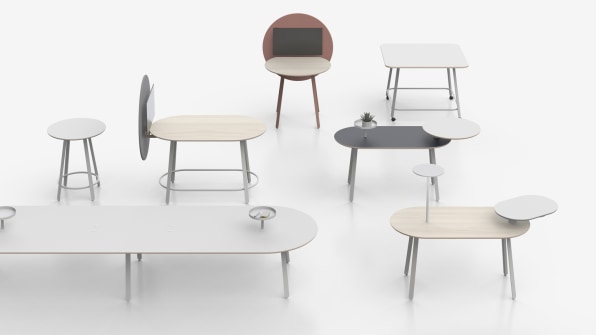
It makes sense. As far back as the 12th century, King Arthur’s knights would meet at the Round Table as a symbol of equality. Contemporary studies bear it out too: In a 2013 paper, researchers found that angular seating arrangements encouraged more individual decisions, while circular arrangements lead to a greater sense of belonging.
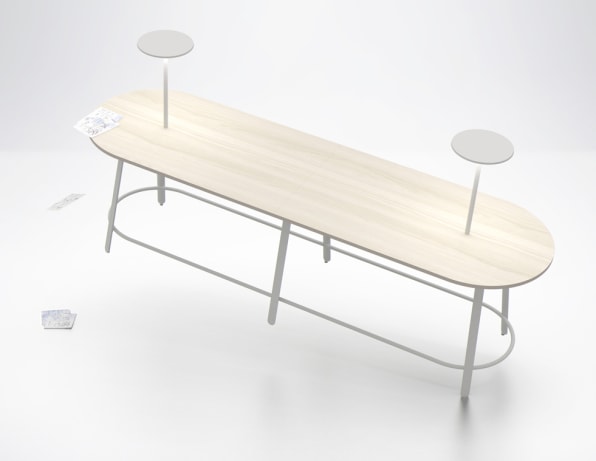
With Haven, Simonian says they wanted to draw people in as naturally and casually as possible, “like a magnet.” To do that, they designed tall tables that don’t require chairs. In addition to the regular-height table that comes with a bench, the collection features two standing tables: one that mimics the height of a kitchen counter, and one that’s as tall as a bar. Naturally, both have foot rests.
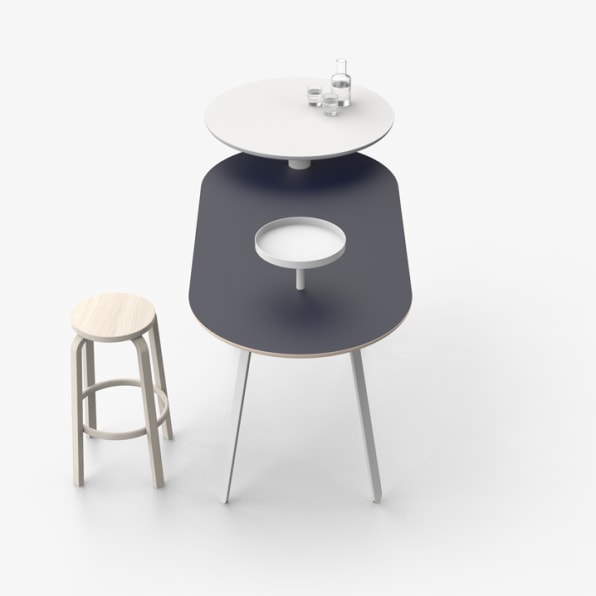
Think about it. An informal meeting has occurred in the breakout area of your office, and you want to join, but while everyone is already sitting, you’d have to find a chair, pull it up, and squeeze in. Removing the chair removes the friction, and makes it easier to feel included.
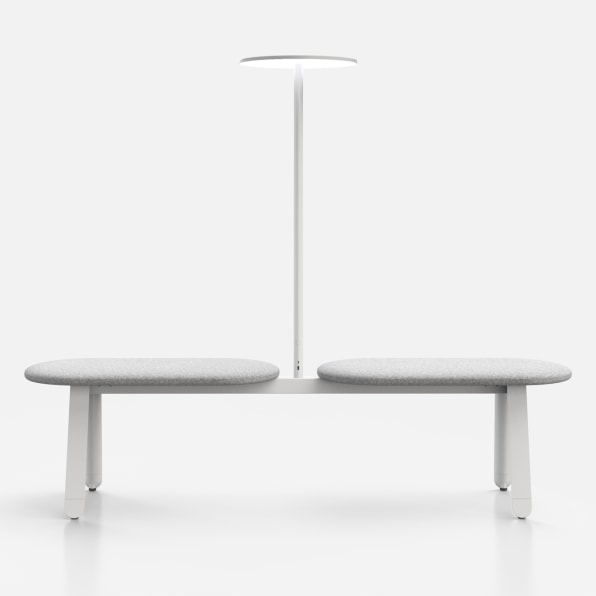
At its core, Haven is a flexible affair. Its two-seater benches are interrupted in the middle to give both sides some personal space. In between, there can be a tray, a swiveling table, or a charming, minimalist lamp that comes with a set of charging ports. The benches can be used in meeting rooms but also in transition spaces like hallways or breakout rooms. And if two colleagues come in to charge their phones and strike up a casual meeting, even better. To a degree, a bench seems less flexible, and possibly less comfortable than a chair with a backrest, but the point of these benches is to cater to those transient moments. “You can hang out, then move on,” says Simonian.
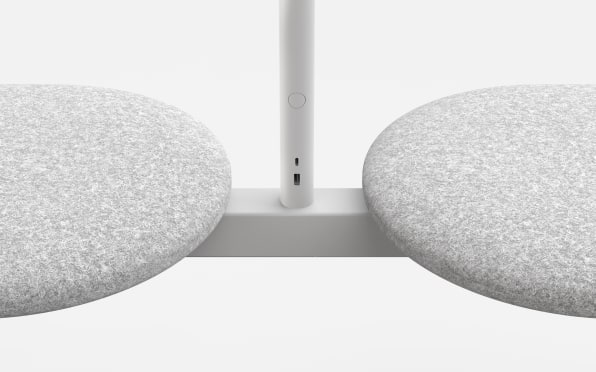
Much of Haven was designed for transition spaces. As traditional offices shift toward a hybrid format where people split their time between the office and remote work, the personal desk may become a thing of the past.“If you go to the office and you don’t have a home base anymore, you need to have a place that feels like you can make it your home,” says Simonian.
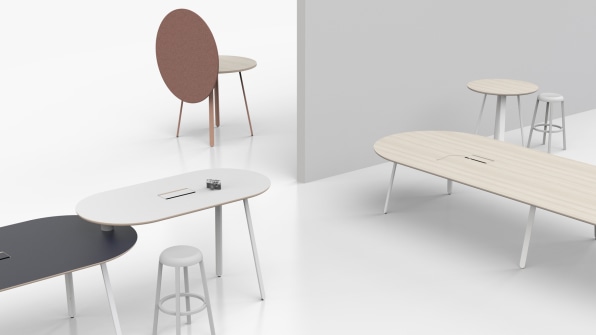
None of these ideas are radical. From 2012 to 2016, Mike & Maaike was part of X, the research and development facility formerly operated by Google. The pair has spent enough time in work environments to understand that the pandemic hasn’t created the trend for flexible workspaces, it simply accelerated it. In fact, they started designed Haven even before the pandemic. “The more we worked on it, the more we realized how relevant it was,” says Simonian.
Haven comes almost 10 years after the duo designed a modular office system for Watson, and a collection of lounge chairs for furniture company Haworth. Next up, the duo is working on storage solutions, more variety in lighting, and looking at how individual work can be addressed. Because, of course, none of this means that personal space is dead. “People want privacy,” says Simonian, “but where people do get together, that part is going to change.”
…
This article first appeared in www.fastcompany.com
Seeking to build and grow your brand using the force of consumer insight, strategic foresight, creative disruption and technology prowess? Talk to us at +971 50 6254340 or mail: engage@groupisd.com or visit www.groupisd.com/story

